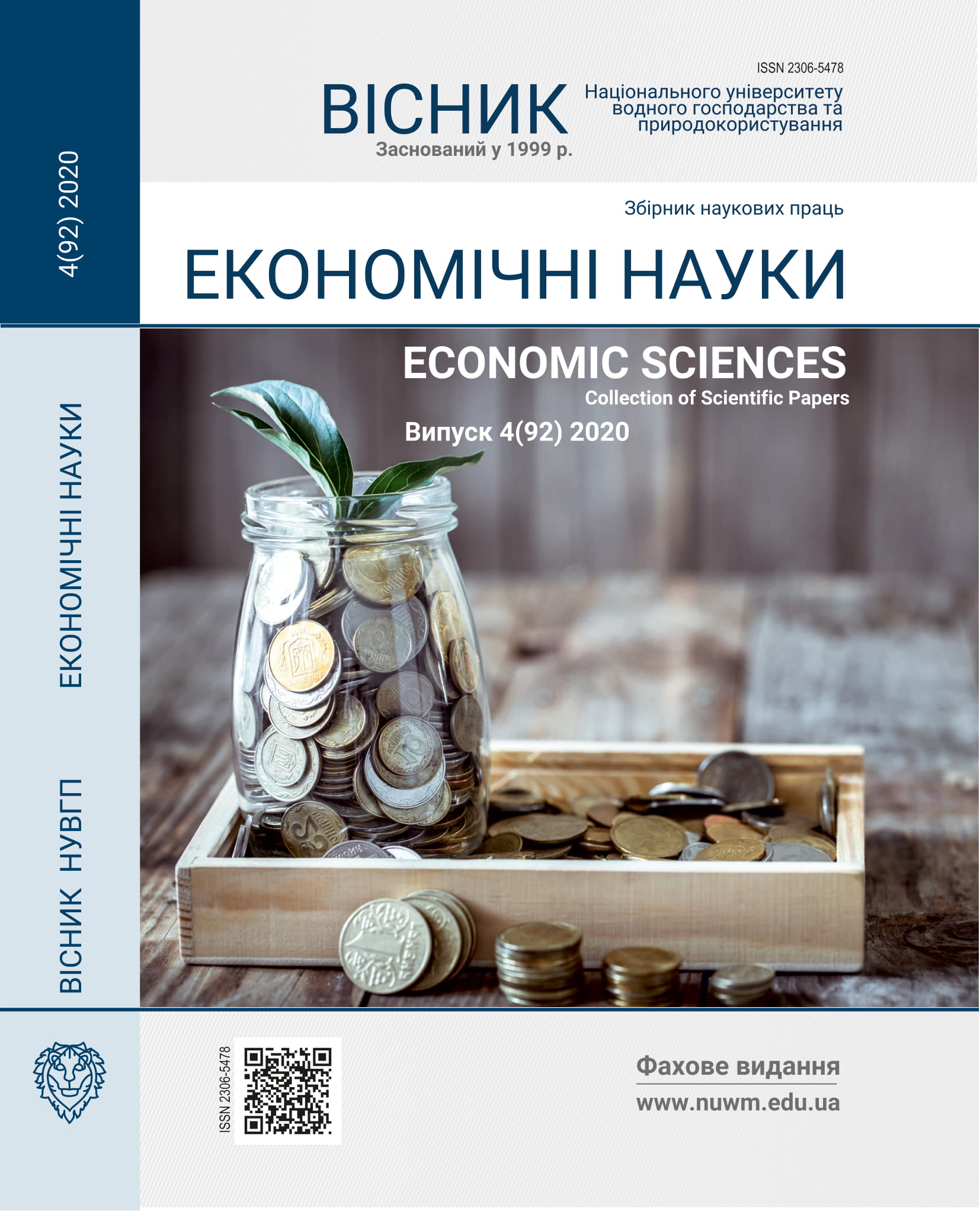METHODICAL ASPECTS OF ANALYSIS OF ENTERPRISES CASH FLOWS
DOI:
https://doi.org/10.31713/ve4202021Keywords:
analysis, cash flows, cash, retrospective analysis, coefficient analysis, Financial Statements.Abstract
The article investigates the methodological aspects of the analysis ofcash flows of the enterprise. The authors analyze the interpretation of theconcept of «cash flows», substantiate the importance of studying themethods of their analysis in order to develop a mechanism for effectivemanagement.It is established that an important role in the retrospective analysis ofcash flows belongs to the information base, which consists of financialstatements. Thus, the reliability of financial statements affects theeffectiveness of decision-making in terms of cash flow management.The peculiarities of conducting a retrospective analysis of cash flowsaccording to the Statement of Cash Flows, compiled by direct and indirectmethods, are considered. The authors analyzed the advantages of analytical work in different forms of the report. The analysis of cash flows according to the Statement of Cash Flows, compiled by the direct method makes it possible to estimate the total amount of income and expenditure, as well as to identify the main sources of cash inflows and directions of their expenditure. The analysis of cash flows according to the Statement of Cash Flows, prepared by the indirect method, allows to calculate the data that characterize the net cash flow in the reporting period, and to establish the relationship between income from ordinary activities and changes in cash balances. It is established that the advantage of the analysis of cash flows on the Statement of Cash Flows, prepared by the indirect method, is that with this form of the report you can identify the relationship between current assets of the enterprise and the financial result. It is substantiated that the coefficient analysis of cash flows allowsconsidering in more detail the state of the company’s cash. An algorithm for complex cash flow analysis is proposed, which involves five consecutive stages. The authors summarize the relative indicators that characterize the efficiency of cash use and allow assessing the adequacy of cash flows. The method of calculating the solvency ratio, cash flow liquidity ratio, net cash flow adequacy ratio, cash adequacy ratio, cash flow efficiency ratio, Beaver ratio, revenue quality ratio, profitability ratio and cash flow ratio is reflected.The authors identified the need to use both retrospective and ratioanalysis, as they are interrelated and provided reliable and high-qualityfinancial statements allow you to thoroughly assess the cash flows of theentity for the period under study.References
Atamas P., Atamas O. Metodychni pidkhody do analizu hroshovykh potokiv za materialamy Zvitu pro rukh hroshovykh koshtiv. Bukhhalterskyi oblik i audyt. 2013. № 5. S. 13–19. URL: http://nbuv.gov.ua/UJRN/boau_2013_5_4 (data zvernennia: 10.12.2020).
Drebit H. M. Teoretyko-metodychni aspekty analizu hroshovykh potokiv yak vazhlyvykh chynnykiv yikh planuvannia, upravlinnia ta kontroliu. Zbirnyk naukovykh prats Bukovynskoho universytetu. Ekonomichni nauky. 2015. Vyp. 11. S. 161–168. URL: http://nbuv.gov.ua/UJRN/znpen_2015_11_21 (data zvernennia: 10.12.2020).
Yelisieieva O. K., Simon H. S. Analiz hroshovykh potokiv firmy yak skladova formuvannia stratehii staloho rozvytku. Biznes Inform. 2017. № 12. S. 380–384. URL: http://nbuv.gov.ua/UJRN/binf_2017_12_59.2 (data zvernennia: 10.12.2020).
Koshelok H. V., Hrinchenko R. V. Analiz hroshovykh potokiv u systemi upravlinnia pidpryiemstvom. Halytskyi ekonomichnyi visnyk. 2020. № 2. S. 231-242. URL: http://nbuv.gov.ua/UJRN/gev_2020_2_27 (data zvernennia: 10.12.2020).
Lazaryshyna I. D. Realizatsiia funktsionalnoi yakosti analizu hroshovykh potokiv u pryiniatti upravlinskykh rishen. Naukovyi visnyk Natsionalnoho universytetu bioresursiv i pryrodokorystuvannia Ukrainy. Ser. Ekonomika, ahrarnyi menedzhment, biznes. 2018. Vyp. 290. S. 140–146. URL: http://nbuv.gov.ua/UJRN/nvnau_econ_2018_290_19 (data zvernennia: 10.12.2020).
Levkina E. V., Ermakova A. O., Driga E. A. Sovremennaya metodika analiza denejnyih potokov organizatsii. Karelskiy nauchnyiy jurnal. 2017. № 4 (21). T. 6. S. 172–175.
Melnychuk H. S. Teoretychni aspekty provedennia analizu hroshovykh potokiv pidpryiemstva. Zbirnyk naukovykh prats Universytetu derzhavnoi fiskalnoi sluzhby Ukrainy. 2018. № 2. S. 222–236. URL: http://nbuv.gov.ua/UJRN/znpnudps_2018_2_19 (data zvernennia: 10.12.2020).
Mizhnarodnyi standart bukhhalterskoho obliku 7 vid 30.06.2017. «Zvit pro rukh hroshovykh koshtiv». URL: https://ips.ligazakon.net/document/MU17030 (data zvernennia: 10.12.2020).
Lee U., Kang N., Lee I. (2020). Choice data generation using usage scenarios and discounted cash flow analysis. Journal of Choice Modelling. 2020. 37(100250). doi:10.1016/j.jocm.2020.100250 (data zvernennia: 10.12.2020).
Yescombe E. R., Farquharson E. Cash Flow and Investment Analysis. Public-Private Partnerships for Infrastructure. 2018. 25–34. doi:10.1016/b978-0-08-100766-2.00003-6 (data zvernennia: 10.12.2020).

